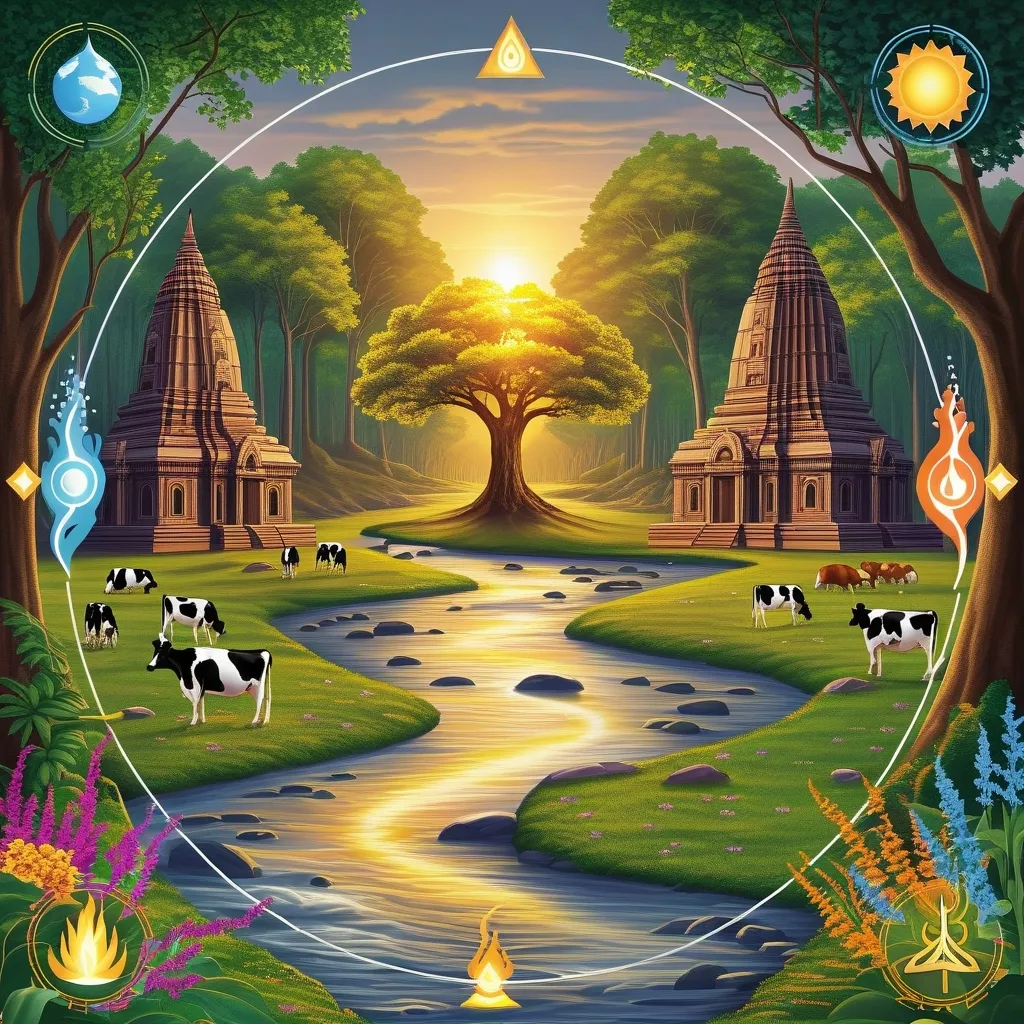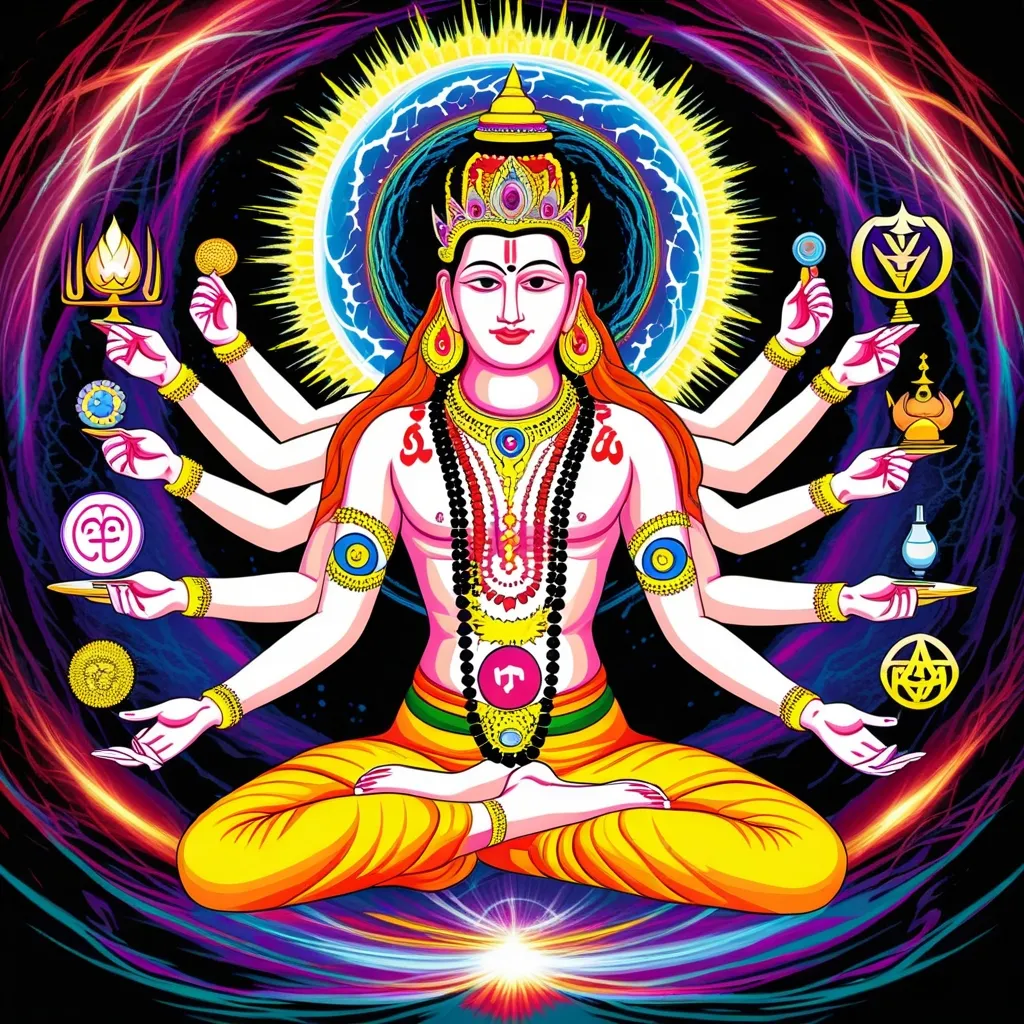Hey there! Let’s dive into the fascinating world of Hinduism and its connection to nature. It’s pretty mind-blowing how this ancient religion has such a deep bond with the environment. So, grab a cup of chai and let’s explore if Hinduism might just be the most eco-friendly religion out there.
First off, Hinduism sees nature as something sacred, not just a bunch of resources to use up. There’s this cool concept called “Vasudhaiva Kutumbakam” which basically means “the whole world is one big family.” It’s like Hinduism is telling us, “Hey, everything around you – the trees, the rivers, even that annoying mosquito – it’s all connected, and it’s all divine.”
Think about it this way: in Hinduism, God isn’t just chilling in some far-off heaven. Nope, God’s right here, in everything you see. The air you’re breathing? Divine. The ground you’re walking on? Yep, that’s divine too. It’s like playing a cosmic game of “I Spy” where everything you spot is a manifestation of the divine.
Now, let’s talk about the elements. In Hinduism, there are five big ones: space, air, fire, water, and earth. These aren’t just random things; they’re all interconnected and super important. And get this – each element is linked to one of our senses. Your nose? That’s connected to earth. Your tongue? Water’s got that covered. Eyes, skin, ears – they’re all tied to an element. It’s like nature built us a custom sensory system to connect with the world around us.
But Hinduism doesn’t stop at just appreciating nature; it goes full-on worship mode. Rivers aren’t just bodies of water; they’re goddesses. Trees aren’t just plants; they’re sacred beings. The Ganges River, for example, isn’t just a river – it’s a full-blown deity. Polluting it? That’s not just bad for the environment; it’s like, spiritually offensive.
And don’t even get me started on the trees. Tulasi, Neem, Peepal – these aren’t just random plants. They’re like the rock stars of the plant world in Hinduism. People plant them, care for them, and worship them. It’s not just about looking pretty; these trees have serious ecological and medicinal cred.
Now, let’s talk about cows. In Hinduism, cows are like the ultimate eco-friendly buddies. They give milk, sure, but their manure is also a big deal. It’s like nature’s own fertilizer, way better than those harsh chemicals that mess up the soil. This whole cow thing? It’s part of a bigger picture of living in harmony with nature.
Hinduism’s also got this concept called dharma. It’s like a cosmic rule book that tells people how to live right, and that includes being good to the environment. It’s not just about recycling or using a reusable water bottle (though those are great too). It’s about seeing yourself as part of this big, interconnected web of life and acting accordingly.
But here’s the thing – despite all these eco-friendly teachings, modern India’s got some serious environmental issues. Pollution, deforestation, you name it. It’s like there’s this disconnect between the ancient wisdom and today’s reality. But don’t worry, there’s hope! More and more people are trying to bridge that gap, bringing those old Hindu teachings into the modern world to tackle today’s environmental problems.
There are even cool initiatives like the Green Temples Guide. It’s all about making Hindu temples and ashrams more eco-friendly. Imagine a place of worship that’s not just spiritually enlightening but also environmentally conscious. It’s like killing two birds with one stone, except no birds are harmed because, you know, respect for all life and stuff.
Hindu festivals are another way the religion connects people with nature. These aren’t just random parties; they’re celebrations of nature’s cycles. Take Makar Sankranti, for example. It’s not just about flying kites and eating sweets. It’s a big ol’ party for the sun as it starts its journey north, bringing new life and energy. It’s like Hinduism’s way of saying, “Hey, thanks, Sun! You’re awesome!”
Now, it’s not all sunshine and rainbows. Some people have criticized how Hindu environmental teachings are sometimes used for political gain rather than actually helping the environment. It’s like when that one friend says they’re going vegan to save the planet but then orders a steak when no one’s looking. It’s important to walk the talk, you know?
So, is Hinduism the world’s most eco-friendly religion? Well, it’s definitely up there. The way it sees humans as caretakers of the planet, its reverence for nature, and its emphasis on living in harmony with the environment – all these make for a pretty strong eco-friendly foundation.
But here’s the real challenge: how do we take these ancient teachings and apply them to today’s world? How do we balance tradition with the realities of modern life? It’s like trying to use your great-grandmother’s recipe in a modern kitchen – sometimes you need to make a few tweaks.
The cool thing is, more and more people are trying to do just that. They’re taking those old Hindu ideas about respecting nature and using them to fight climate change and promote sustainable living. It’s like they’re building a bridge between the ancient wisdom and modern environmental activism.
In the end, Hinduism offers this amazing, rich tapestry of ideas about how we should interact with the world around us. It’s not just about worshipping nature; it’s about seeing ourselves as part of nature. It’s about understanding that when we harm the environment, we’re really harming ourselves.
So, next time you’re out in nature, whether it’s a walk in the park or a hike in the mountains, try looking at it through a Hindu lens. See the divine in that tree, in that river, in that annoying mosquito (okay, maybe that’s taking it too far). Who knows? You might just find yourself feeling a little more connected to the world around you.
And hey, even if you’re not Hindu, there’s something we can all learn from this approach to nature. Maybe if we all saw the world as a little more sacred, a little more connected, we’d take better care of it. After all, we’ve only got one planet. Might as well treat it like the divine manifestation it is, right?
So there you have it – a whirlwind tour of Hinduism and its eco-friendly ways. Whether you’re a devoted Hindu, an environmental enthusiast, or just someone who likes trees, there’s something here for everyone. Now, if you’ll excuse me, I’m off to hug a tree. It’s not weird; it’s spiritual!






